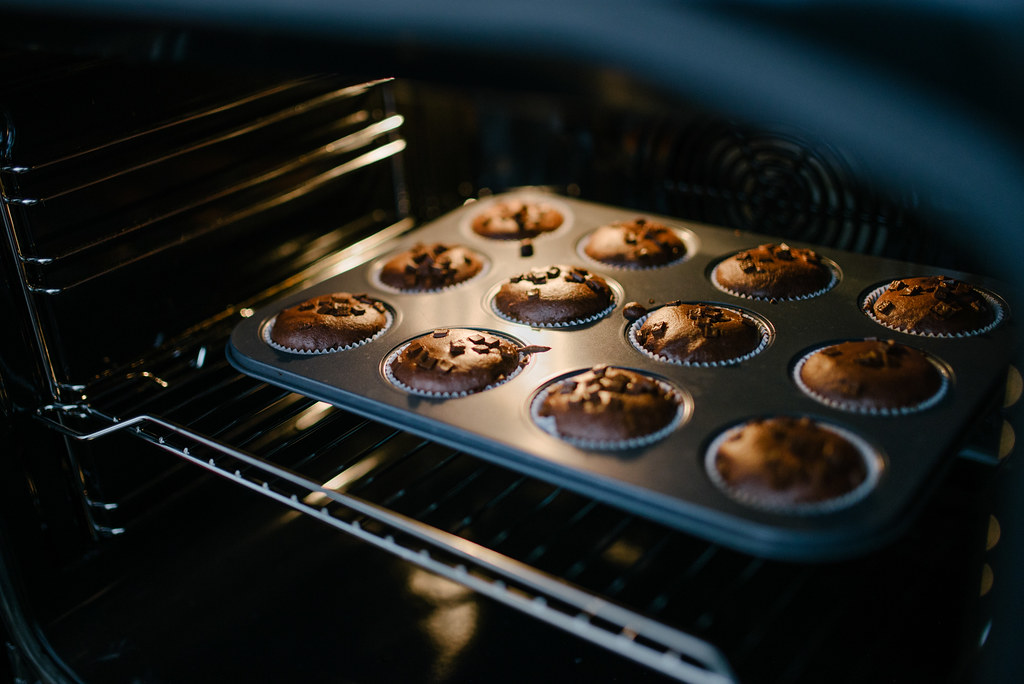Chocolate, with its rich and indulgent flavor, is a versatile ingredient that plays a crucial role in the art of baking. Its adaptability allows it to be incorporated into a wide range of baked goods, resulting in delicious treats that satisfy any chocolate lover’s cravings. From classic chocolate chip cookies to decadent chocolate cakes, the possibilities are endless when it comes to using chocolate in baking.
The adaptability of chocolate in the art of baking is truly remarkable. Its ability to transform and enhance various desserts is unmatched. Whether it’s providing a rich and fudgy texture to brownies or adding a velvety smoothness to chocolate mousse, chocolate takes center stage in the world of baking. The widespread use of chocolate in various baked goods is a testament to its versatility and the joy it brings to both bakers and consumers.
The Versatility of Chocolate in Baking
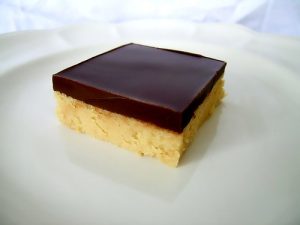
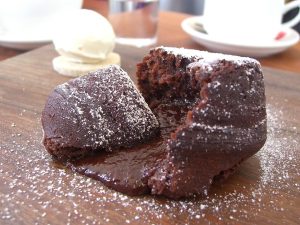
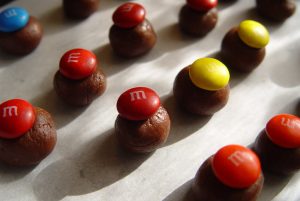
Chocolate comes in various forms, such as bars, chips, and cocoa powder, making it convenient to use in different recipes. Each form brings its own unique characteristics and flavors to the table. For example, chocolate bars provide a smooth and melt-in-your-mouth experience, while chocolate chips add bursts of chocolatey goodness in cookies and muffins. Cocoa powder, on the other hand, lends a deep and intense chocolate flavor to cakes and brownies.
In addition to its various forms, chocolate also comes in different types, including milk, dark, and white chocolate. Milk chocolate is known for its creamy and sweet flavor, making it a popular choice for cookies, cakes, and other baked goods. The smooth and mellow chocolate taste of milk chocolate adds a delightful touch to every bite.
Dark chocolate offers a rich and intense flavor, making it perfect for indulgent treats like brownies, tarts, and truffles. The deep and complex flavor of dark chocolate enhances the overall taste and provides a decadent experience.
White chocolate, despite not technically being chocolate due to the absence of cocoa solids, is a popular choice for ganaches, fillings, and frostings. Its creamy texture and delicate flavor provide a sweet and vanilla-like taste to desserts, complementing other flavors and adding a touch of elegance.
One example of the adaptability of chocolate in baking is its use in chocolate chip cookies. The addition of chocolate chips to the cookie dough creates pockets of melted chocolate, resulting in a gooey and indulgent treat. Whether using milk, dark, or white chocolate, the cookies are elevated to a new level of deliciousness.
Types of Chocolate and Their Uses
Milk chocolate, with its smooth and mellow chocolate taste, is commonly used in a variety of desserts. Its creamy and sweet flavor pairs well with cookies, cakes, and other baked goods, adding a delightful touch to every bite. For example, milk chocolate chips in a chocolate cake create a moist and rich dessert that is loved by all.
Dark chocolate, with its deep and complex flavor, is ideal for those who enjoy a more intense chocolate experience. Its rich and bittersweet taste is perfect for indulgent treats like brownies, tarts, and truffles, where it adds depth and complexity to the overall flavor profile. A prime example of using dark chocolate is in a flourless chocolate cake. The intense flavor of the dark chocolate shines through, creating a dense and fudgy cake that is a chocolate lover’s dream.
White chocolate, with its creamy and delicate taste, is used in ganaches, fillings, and frostings to add a touch of sweetness and a hint of vanilla-like flavor. Its smooth texture and subtle flavor make it a versatile choice for various desserts. One delicious example is a white chocolate raspberry tart, where the sweetness of the white chocolate complements the tartness of the raspberries, creating a harmonious balance of flavors.
Incorporating different types of chocolate into baking allows for a wide range of flavor profiles and taste experiences. The choice of chocolate can greatly impact the final outcome of a dessert, making it important to select the right type of chocolate for each recipe.
Chocolate Flavor Pairings
Chocolate can be enhanced by pairing it with various flavors, creating delectable combinations that elevate the overall taste of desserts. Some popular flavor pairings include:
- Sea Salt and Caramel: The combination of sweet and salty flavors enhances the richness of chocolate, creating a harmonious balance that tantalizes the taste buds. A prime example of this pairing is in salted caramel chocolate truffles, where the saltiness of the caramel enhances the sweetness of the chocolate.
- Raspberry and Dark Chocolate: The tartness of raspberries complements the bittersweetness of dark chocolate, resulting in a delightful contrast of flavors. This pairing is often showcased in chocolate raspberry tarts, where the brightness of the raspberries cuts through the richness of the dark chocolate.
- Mint and Chocolate: The refreshing flavor of mint pairs well with the smoothness of chocolate, creating a cool and invigorating sensation. Mint chocolate chip cookies are a classic example of this pairing, where the mint flavor adds a refreshing twist to the traditional chocolate chip cookie.
- Orange and Dark Chocolate: The citrusy notes of orange beautifully balance the richness of dark chocolate, creating a harmonious blend of flavors. This combination is often found in chocolate orange cakes or tarts, where the zesty orange flavor brightens up the deep flavors of the dark chocolate.
These flavor pairings showcase the versatility of chocolate and its ability to harmonize with a wide range of ingredients, creating a symphony of flavors in every bite. The creativity of pairing chocolate with different flavors allows for endless possibilities in the art of baking.
Techniques for Working with Chocolate in Baking
Working with chocolate requires some techniques to ensure the best results. When melting chocolate, it is crucial to use a low and slow method to avoid overheating and seizing the chocolate. Baking chocolate or cocoa-flavored candy wafers are recommended for melting, as they melt smoothly and have a consistent texture. It is important to be cautious of moisture, as chocolate can seize up if exposed to water or steam. Proper storage is also crucial to prevent sugar bloom and fat bloom, which can occur due to exposure to moisture and temperature changes. Tightly wrapping chocolate and storing it away from strong odors in a cool and dry place will help maintain its quality and prevent unwanted changes in texture or appearance.
Another technique when working with chocolate is tempering, which involves carefully heating and cooling the chocolate to achieve a glossy and smooth finish. Tempering is often used when making chocolate decorations or coatings, as it ensures that the chocolate sets properly and has a pleasing texture. This technique requires precision and practice, as the temperature must be carefully controlled to achieve the desired results.
The importance of proper techniques when working with chocolate cannot be overstated. By following these techniques, bakers can ensure that their chocolate creations turn out beautifully and have the desired texture and appearance.
Chocolate Decorations and Garnishes
Chocolate decorations and garnishes can add a touch of elegance and visual appeal to baked goods. Creating chocolate curls and shavings is a simple yet effective way to decorate desserts. Using a vegetable peeler or a grater, solid chocolate can be transformed into decorative curls and shavings that can be sprinkled over cakes, cupcakes, and other treats. These chocolate curls and shavings not only add a beautiful finishing touch but also provide an added layer of texture and flavor.
Another technique is chocolate drizzling, where melted chocolate is carefully drizzled over baked goods using a piping bag or a spoon. This adds a beautiful and artistic touch to desserts, enhancing their appearance and adding a touch of sophistication. For example, drizzling melted white chocolate over a dark chocolate cake creates a stunning contrast and adds a touch of elegance to the dessert.
For more intricate designs, melted chocolate can be piped onto parchment paper, allowing it to set and creating chocolate garnishes that can be used to adorn cakes, pastries, and other baked goods. These garnishes can be as simple or as elaborate as desired, showcasing the creativity and artistry of the baker. For instance, piping melted chocolate into delicate flowers or intricate patterns can elevate the visual appeal of a cake or dessert, making it a true work of art.
The possibilities for chocolate decorations and garnishes are endless, limited only by the imagination of the baker. By incorporating these techniques, bakers can take their baked goods to the next level, impressing both visually and in taste.
Basic White Chocolate Ganache Macaron Filling
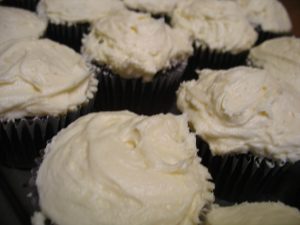
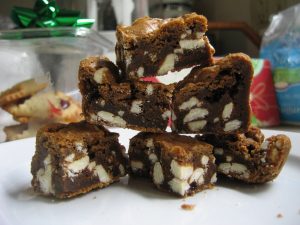
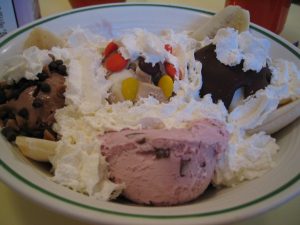
For those looking to add a luscious filling to their macarons, a basic white chocolate ganache filling is a delicious choice. This recipe is quick and easy to make, using simple ingredients that are readily available. The filling is sturdy at room temperature, making it suitable for traveling and dessert tables. It can also be easily adapted for different flavors and variations, allowing for endless possibilities.
A basic white chocolate ganache macaron filling recipe includes white baking chocolate, heavy cream with at least 36% milk fat content, room temperature unsalted butter, and optional vanilla extract for additional flavor.The step-by-step instructions provided in the recipe ensure that even those new to macaron making can successfully create this delectable filling.
The versatility of this white chocolate ganache filling allows for various flavor variations. For example, adding a hint of raspberry extract to the filling can create a delightful raspberry white chocolate ganache that pairs perfectly with raspberry macaron shells. Alternatively, a touch of peppermint extract can transform the filling into a refreshing mint white chocolate ganache, creating a flavor combination reminiscent of mint chocolate chip ice cream. The possibilities for flavor variations are endless, allowing bakers to experiment and create unique macarons that suit their taste preferences.
Achieving the Desired Texture in Brownies
Brownies are beloved treats known for their dense and fudgy texture. Achieving the desired texture in brownies requires careful consideration of various factors. Baking time, pan size, and the ratio of sugar to fat all contribute to the texture of brownies.
Baking time is a crucial factor in determining the texture of brownies. Overbaking can result in dry and cakey brownies, while underbaking can lead to overly gooey and undercooked brownies. The toothpick test can be used to check for doneness, where a toothpick inserted into the center of the brownies should come out with a few moist crumbs. This indicates that the brownies are cooked through but still retain their fudgy texture.
Pan size also plays a role in the texture of brownies. Using a smaller pan will result in thicker brownies with a denser texture, while a larger pan will yield thinner brownies with a lighter texture. It is important to choose a pan size that aligns with the desired outcome.
The ratio of sugar to fat in a brownie recipe can affect the texture and baking time. A higher sugar content will result in a fudgier texture, while a higher fat content will lead to a denser and richer texture. Balancing the ratio of sugar to fat is key to achieving the perfect texture.
One example of achieving the desired texture in brownies is by using a recipe that calls for a higher fat content, such as melted butter or oil. This results in a denser and more indulgent brownie. On the other hand, a recipe that uses less fat and more sugar will yield a lighter and cake-like texture. By experimenting with different recipes and adjusting the ratio of sugar to fat, bakers can achieve the desired texture that suits their preference.
Considerations for Selecting a Brownie Recipe
When selecting a brownie recipe, there are a few factors to consider. The texture and chocolate intensity of the brownies should align with personal preferences. Some may prefer fudgy brownies with a rich and intense chocolate flavor, while others may prefer cakey brownies with a lighter chocolate taste. The choice of a brownie recipe will greatly impact the overall experience and enjoyment of the dessert.
Another factor to consider is the incorporation of add-ins and flavor enhancements. Exploring recipes with add-ins like nuts, chocolate chunks, or flavored extracts can elevate the flavor profile of the brownies and add additional texture and complexity. For example, adding walnuts to a classic brownie recipe creates a delightful crunch and nutty flavor that pairs well with the chocolate. Similarly, incorporating mint extract into the batter can create refreshing mint chocolate brownies that are perfect for those who enjoy the combination of mint and chocolate.
The complexity of the recipe is also a consideration. Some brownie recipes may require additional steps or ingredients, resulting in a more intricate and decadent dessert. These recipes are perfect for special occasions or when looking to impress with a more elaborate brownie creation. On the other hand, simpler recipes with minimal ingredients and steps are great for quick and easy baking sessions or when time is limited.
Flavor enhancements can also play a role in selecting a brownie recipe. Experimenting with spices like cinnamon or adding ingredients like espresso powder can enhance the chocolate flavor and add depth to the brownies. These flavor enhancements provide an opportunity to create unique and personalized brownies that cater to individual tastes.
By considering factors such as texture, chocolate intensity, add-ins, complexity, and flavor enhancements, bakers can select a brownie recipe that suits their preferences and creates a truly delightful dessert.
Proper Techniques for Melting Chocolate
Melting chocolate requires proper techniques to achieve the desired results. It is important to use suitable chocolate for melting, such as baking chocolate or cocoa-flavored candy wafers. Chocolate chips may not melt as smoothly and can result in a less desirable texture.
To avoid overheating and seizing the chocolate, it is recommended to use a low and slow method, such as a double boiler or microwave at low power. This ensures that the chocolate melts gently and evenly, preventing any unwanted changes in texture or flavor. It is important to be cautious of moisture, as chocolate can seize up if exposed to water or steam. Even a small amount of moisture can cause the chocolate to become grainy and clumpy.
Proper techniques for melting chocolate also include avoiding direct contact with water or alcohol, as these can cause the chocolate to seize. Sugar bloom and fat bloom are two common issues that can occur when working with chocolate. Sugar bloom is caused by surface moisture, resulting in a speckled greyish appearance on the chocolate. Fat bloom, on the other hand, occurs when the cocoa butter separates from the chocolate, resulting in a dull and whitish appearance. To prevent these issues, it is important to store chocolate properly by tightly wrapping it and keeping it away from strong odors.Storing chocolate at a temperature of 65-68°F with no more than 55% humidity helps maintain its quality and prevents bloom.
By following these proper techniques for melting chocolate, bakers can ensure that their chocolate creations turn out beautifully and have a smooth and velvety texture.
Conclusion: Embracing the Art of Chocolate in Baking
The adaptability and versatility of chocolate in the art of baking are truly remarkable. From its various forms and types to the endless flavor combinations and decorative possibilities, chocolate offers a world of creativity and indulgence. Its rich and indulgent flavor enhances any dessert, making it a beloved ingredient for bakers and consumers alike.
Through the examples and techniques discussed in this article, it is evident that chocolate has an important place in the world of baking. Whether it’s the addition of chocolate chips to cookies, the creation of intricate chocolate decorations, or the selection of the perfect brownie recipe, chocolate brings joy and excitement to the baking process.
So, embrace the art of chocolate in baking and let your creativity and taste buds soar to new heights of decadence and delight. Explore the numerous possibilities that chocolate offers, experiment with different flavors and techniques, and create delectable masterpieces that bring smiles and satisfaction to all who indulge. The adaptability of chocolate in the art of baking truly knows no bounds, and the joy it brings is simply irresistible.

